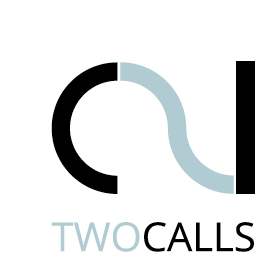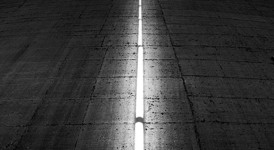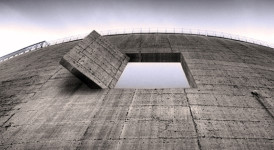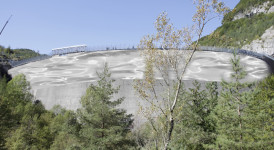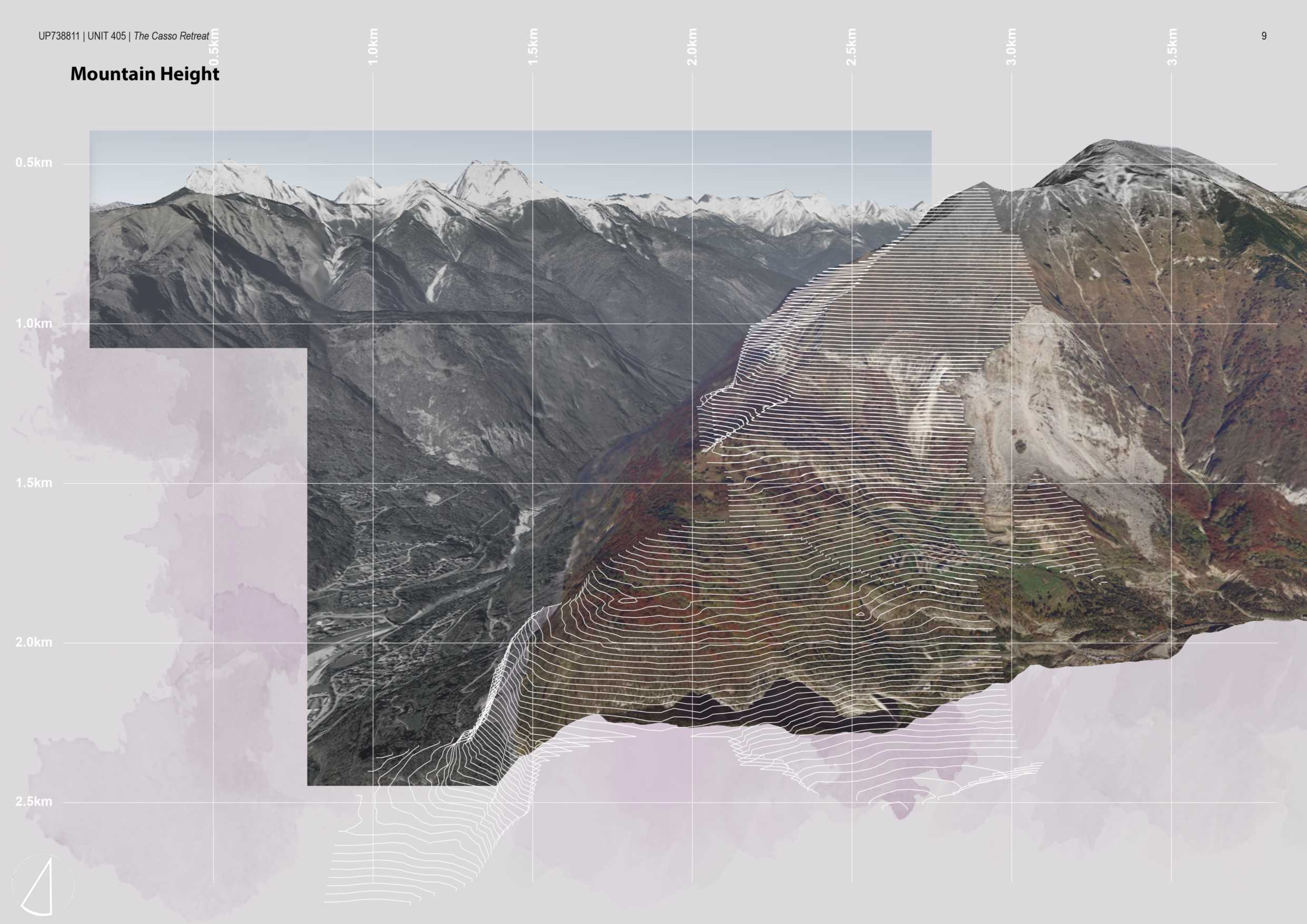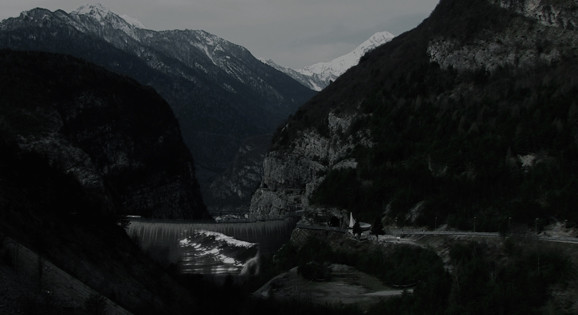
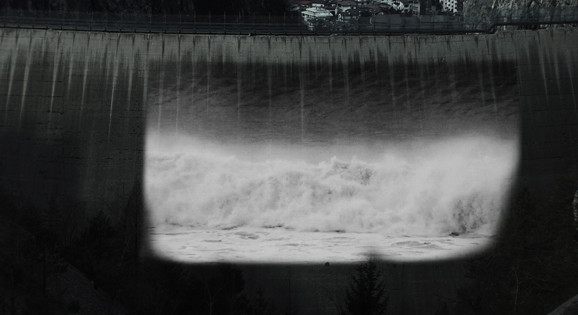
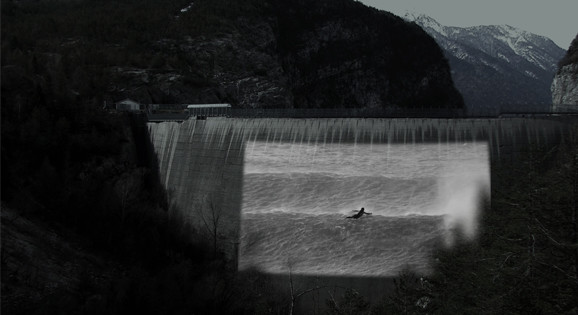
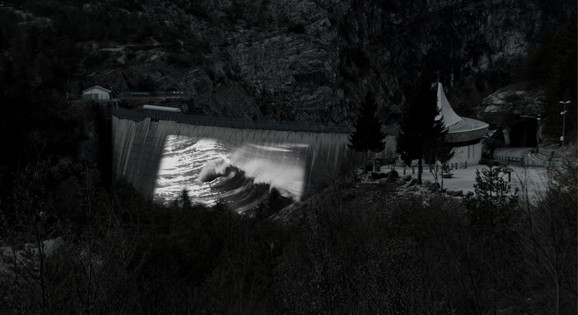
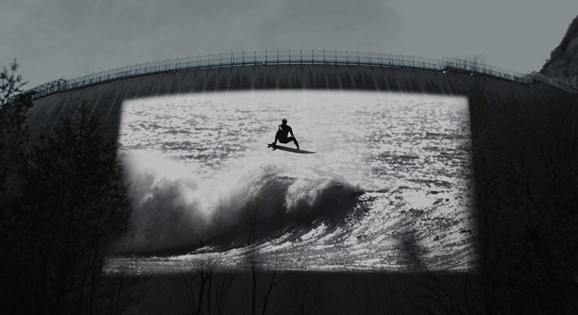
The installation is only visible during the night and uses some digital film-projectors which reproduce the black and white images on the grey surface of the dam, and that are conveniently placed in the space across from it.
During the day the dam remains unchanged, silent and grim, an everlasting memory of a tragic (to say the least) event, which has unavoidably changed the fortune and destiny of those who have endured and lived it.
Goethe said: “Nature! We are surrounded and embraced by her – unable to step out of her and unable to penetrate her more deeply. Unasked and unwarned, she accepts us into the circulation of her dance and propels herself with us until, tired out, we fall out of her arms. We live in her midst and are strangers to her. We affect her continually but have no power over her. Life is her most beautiful invention and death is her ploy to gain much life. She doesn’t know past nor future. Present is her eternity.”
Sophocles, in his Antigone says that the plough wounds the earth, but that the earth puts itself back together after its passing. In the same manner, the ship breaks the gentle calm of the sea, but the water recomposes itself, because nature is sovereign.
The images that I’m presenting as an artwork for twocalls represent a reflection on the relationship between Human and Nature. We don’t have to separate Human and Nature: the human is part of it. The human has always confronted itself with the infinity of the universe, of which he feels like a part. The profound link with nature, that is often the place there the human spirit can seek refuge, is determined when it establishes a fair equilibrium with it.
The tragedy of the Vajont, instead, represents the exact opposite: here the people didn’t try to establish a fair equilibrium, there wasn’t that just attention and respect that nature, fundamentally disinterested in the human needs, silently demands, and exactly in that place nature has decided to give the damage that has been done to her back to the human.
These images want to be a homage, an ode to Life, to Water, to the Human.
Raising awareness on opinions, stimulating reflection, regenerating memory, breaching into consciences with a new manner of seeing and hearing, this is what I’ve tried to do, through the language of visual arts.
–
L’istallazione è visibile solamente di notte ed utilizza dei proiettori cinematografici digitali che riproducono le immagini in bianco e nero sulla superficie grigia della diga, e che saranno posizionati opportunamente nello spazio antistante la diga.
Durante il giorno la diga rimane invariata, silenziosa ed austera, ricordo perenne di un avvenimento a dir poco tragico, che ha inevitabilmente cambiato le sorti e il destino di chi l’ha subita e vissuta.
Scrive Goethe: “Natura! Da essa siamo circondati e avvinti, né ci è dato uscirne e penetrarvi più a fondo. Ci rapisce nel vortice della sua danza e si lascia andare con noi, finché siamo stanchi e le cadiamo dalle braccia. Viviamo nel suo seno e le siamo estranei. Costantemente operiamo su di essa e tuttavia non abbiamo alcun potere sulla natura. La vita è la sua invenzione più bella e la morte è il suo artificio per avere molta vita. Non conosce né passato né futuro. Il presente è la sua eternità“.
Sofocle, nell’Antigone dice che l’aratro ferisce la terra, ma questa si ricompone dopo il suo passaggio. Allo stesso modo la nave fende la calma trasognata del mare, ma le acque si ricompongono perché la natura è sovrana.
Le immagini che presento come lavoro per twocalls rappresentano una riflessione sul rapporto tra Uomo e la Natura. Non dobbiamo separare Uomo e Natura: l’uomo è integrato ad essa.
L’uomo, da sempre, si confronta con l’infinità dell’universo, a cui sente di appartenere. Il profondo legame con la natura, che è spesso il luogo in cui l’animo umano può rifugiarsi, si determina quando si instaura un giusto equilibrio con essa.
La tragedia del Vajont, invece, rappresenta l’esatto opposto: qui non si è cercato di instaurare un giusto equilibrio, non c’è stata la giusta attenzione e il rispetto che la natura, fondamentalmente disinteressata ai bisogni dell’ uomo, silenziosamente pretende, e proprio in questo luogo la natura ha deciso di restituire all’uomo il danno che le era stato arrecato.
Queste immagini vogliono essere un omaggio, un inno alla Vita, all’Acqua, all’Uomo.
Sensibilizzare le opinioni, stimolare le riflessioni, rigenerare le memorie, fare breccia nelle coscienze con un nuovo modo di guardare e di sentire, questo è quello che tramite il linguaggio delle arti visive ho cercato di fare.
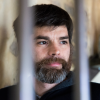
 belluno
belluno
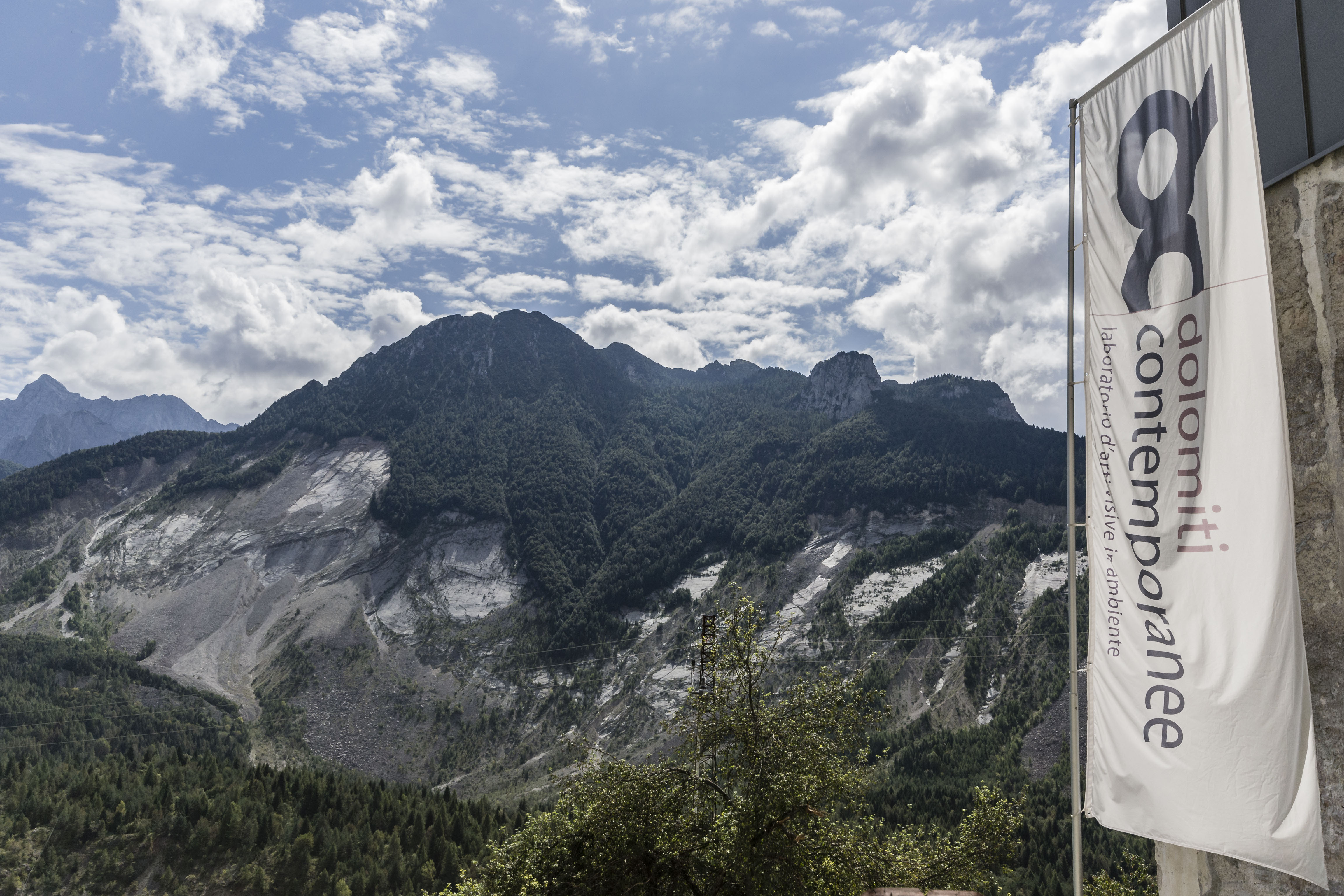
Tuesday, June 15th 2021, 2 – 4 PM, webinar panel:
two calls for vajont: fase _restart.
Vajont: [...]
